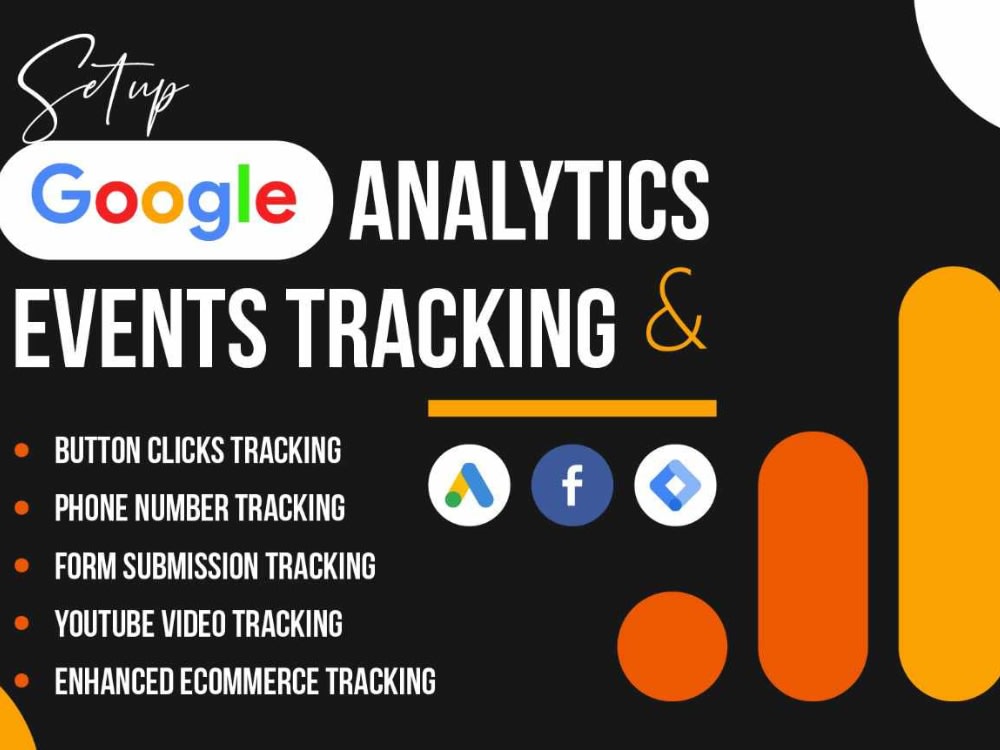Google Analytics Event Tracking Can Be Fun For Everyone
Table of ContentsThe Single Strategy To Use For Google Analytics Event TrackingGoogle Analytics Event Tracking Things To Know Before You Get ThisWhat Does Google Analytics Event Tracking Mean?Google Analytics Event Tracking Fundamentals Explained10 Simple Techniques For Google Analytics Event TrackingGoogle Analytics Event Tracking Things To Know Before You Get This

If you're going to establish event monitoring manually, after that you're mosting likely to have to include some additional code to the elements you wish to gather information from. The code you're mosting likely to collaborate with will certainly look something similar to this: There are 4 elements within that code snippet that you're mosting likely to need to define yourself: event, Classification, event, Activity, occasion, Tag and occasion, Value.
As you can see, two of these are needed (category and activity) while tag and worth are optional. All of it depends on the sort of details you desire relayed back to Google Analytics when a user clicks the specified component (Google Analytics Event Tracking). It will be much simpler to specify these components if you evaluate your site and make a decision which elements/actions you wish to track
The 2-Minute Rule for Google Analytics Event Tracking
Currently, you'll be asked to specify the and and you'll desire to select from the drop-down food selection that shows up when you click on. This will certainly raise the exact same event tracking elements we took a look at earlier, which you'll need to fill up out. When you've defined these, you can relocate to the 2nd box and choose the trigger that will certainly terminate your tag.
On the next display, you'll additionally have a field for calling your trigger and, if you click on package, you'll see a checklist of the various triggers you can choose. In this instance, we intend to select and afterwards select the choice below. Then you'll establish the trigger to only discharge when an aspect is clicked with an URL that includes the.
Every internet site talks. Prior to data analytics, we couldn't listen to the voices of our websites. Just how do you recognize what your web site is claiming? Basic - Event monitoring! Event monitoring offers you a photo of just how individuals engage with your website and company (Google Analytics Event Tracking). More about the author Do you wish to know more? Review on as we explore everything you require to understand, including what it is, why you should track occasions, how to handle occasions data, and other appropriate Frequently asked questions you might have.
The Ultimate Guide To Google Analytics Event Tracking
You can change between your event categories, actions, and tags in the Leading Occasions report. This record is essential for digging even more into research on a specific occasion group. The Occasion Pages record shows the pages where events are caused. In this area, we can check out the leading pages that drive events.
It reveals you the path they take as they move from one event to the following and assists you to identify which content engages your target market the many. Events in Google Analytics have 4 primary aspects. They are also a component of the event tracking code. Google Analytics makes use of these codes to track individual interactions and group them right into event records.
A list of the criteria you can track on your internet site is on the. After examining all essential areas, you can click "X" to close the home window and return to the Overview menu on the.
Some Known Details About Google Analytics Event Tracking

Choosing "False" will certainly protect against that session from being a bounce. If you have not done so, you may need to establish a variable in the Google Analytics Settings box. Click "New Variable ..." if you can't discover one to select. After this, enter your GA monitoring ID in the Monitoring ID area.
Your ID will get on check it out top of the screen. To do this, comply with the next series of actions: After setting up the fields, pick the "Triggering" section. When configuring your brand-new trigger, click the "+" switch, then the "pencil" button, then pick your trigger kind. Tag your trigger and define the problems that cause activate shooting.
Little Known Questions About Google Analytics Event Tracking.
When it comes to recognizing which sections and aspects are leading clients through your conversion funnel, you still will not know. So, without event tracking, GA records will only count brows through as single-page sessions, also if customers invest a great deal of time on one page and involve with it significantly (and a bounce).
Just how does occasion monitoring attain this?Single-page sessions known as bounces start and conclude on the same page. Without event tracking, GA will categorize an individual's browse through as a bounce if they do not browse to an additional web page, no matter how they interact with it. For instance, a video-rich page can have a higher bounce price if occasions are not tracked.
Some Known Factual Statements About Google Analytics Event Tracking
For GA to take event hits into account when measuring bounce prices, you need to select "Non-interaction event" as "False" throughout the GTM setup. Establishing "occasion goals" with occasion action is an excellent means to keep track of user tasks you value very, such as new lead entries or clicks on a contact us to activity.